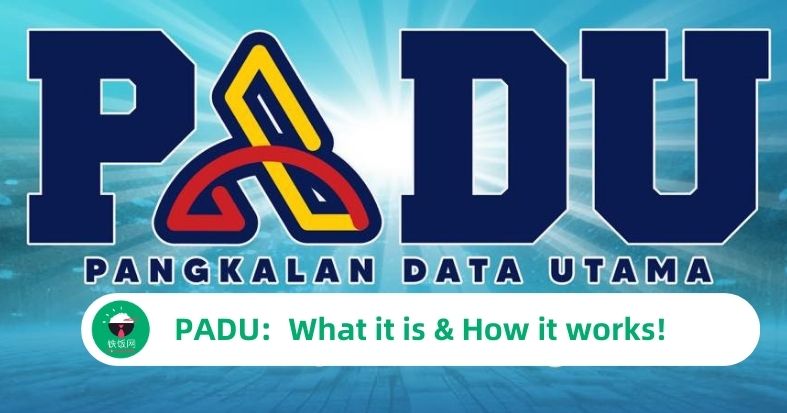
PADU: What it is & How it works!

by Chloe Chan
PADU, also known as the Central Database Hub, is a program initiated by the Malaysian government. Its purpose is to gather and analyze income and socio-economic data in one central location. The goal is to improve the effectiveness of welfare programs by using data to target subsidies more accurately.
Why is Subsidy Targeting Important?
Subsidy targeting is important because it helps the government make better decisions about who should receive financial assistance. By analyzing comprehensive data, the government can identify individuals and households who truly need support. This ensures that subsidies are given to those who need them the most.
How Does Subsidy Targeting Help the Government?
Subsidy targeting helps the government in several ways:
- Informed Decision Making: By using data, the government can make smarter choices about subsidy targeting and welfare programs. This means that resources can be directed to those who need them the most.
- Enhancing Existing Aid Programs: Subsidy targeting complements existing aid programs by providing a more comprehensive and accurate system. It considers various factors beyond just income, such as age, gender, location, occupation, and education level. This ensures that different groups of people receive the appropriate assistance.
- Including More People: Subsidy targeting aims to include individuals who were previously left out of government assistance programs, such as single middle-income individuals and informal workers. By using the database, the government can identify those in need, regardless of where they live or what kind of work they do.
- Planning for the Future: Subsidy targeting provides valuable data for assessing and informing long-term policy decisions. It allows the government to test out new programs and see how effective they are. This proactive approach leads to more effective and sustainable welfare programs.
How Does Subsidy Targeting Help the People?
Subsidy targeting benefits the people in several ways:
- Targeted Subsidies: With subsidy targeting, individuals and households receive subsidies that are specifically tailored to their needs. This ensures that financial assistance reaches those who need it the most, improving their overall well-being.
- Inclusive Assistance: Subsidy targeting aims to include individuals who were previously left out of government assistance programs. This means that more people, regardless of their work or where they live, can access the support they need.
- Efficient Use of Resources: By using data to target subsidies, the government ensures that resources are used more efficiently. This means that assistance can be provided to more people without compromising the quality of support.
- Easier Access to Welfare Programs: The centralized database makes it easier for individuals to access various welfare programs. They only need to register once and can be considered for multiple assistance schemes, reducing the hassle of multiple registrations.
In conclusion, subsidy targeting is an important initiative that aims to improve welfare programs in Malaysia. By using data to make informed decisions, it benefits both the government and the people by ensuring that financial assistance reaches those who need it the most. It promotes inclusivity, efficient resource allocation, and easier access to welfare programs. With proper implementation and continuous monitoring, subsidy targeting can lead to a fairer and more prosperous society in Malaysia.
Frequently Asked Questions (FAQ)
- What is PADU?
- PADU stands for Central Database Hub and is a collaborative initiative by the Ministry of Economy, the Department of Statistics, and the Malaysian Administrative Modernisation and Management Planning Unit (MAMPU). It serves as a central depository for national household income and socio-economic data, enabling targeted subsidies and inclusive welfare programs. - How does PADU improve subsidy targeting?
- PADU utilizes comprehensive data to make informed decisions on subsidy targeting. By considering various metrics beyond income, such as age, gender, location, occupation, and educational level, PADU ensures that subsidies are directed to those who truly need them. - What are the challenges in implementing PADU?
- Some of the challenges in implementing PADU include data security concerns, integration of existing databases, data gathering for the informal sector, establishing clear data-sharing protocols, and involving local government for effective outreach and data reconciliation. - How can data security be ensured in PADU?
- To ensure data security, strong access controls, multi-factor authentication, and regular vulnerability scans are necessary. A clear data governance framework, risk assessment, and transparent communication about data security practices are also essential. - How can local government contribute to PADU's success?
- Local government, including village chiefs (MPKK) and state assembly persons (ADUN), can play a crucial role in data reconciliation and outreach efforts. Their close ties with the community enable them to update individual data and promote PADU registration effectively.
Read More on on Ricebowl :
Popular Jobs:
Find More Jobs|Apprenticeship|Contract Jobs|Internship|Part Time Jobs|Full Time Jobs|Hybrid Work|Freelance Jobs|Admin Jobs|Marketing Jobs|Sales Jobs|Fresh Grad Jobs|Work From Home Jobs|WFH Customer Service
Career Guide:
Resume Template|Cover Letter Template| Interview Questions & Answers|Career Development |Salary & Job Description
Location:
Singapore| Kuala Lumpur|Penang|Petaling Jaya, Selangor|Shah Alam, Selangor|Kuching|Johor|Melaka|Kuantan, Pahang|Ipoh